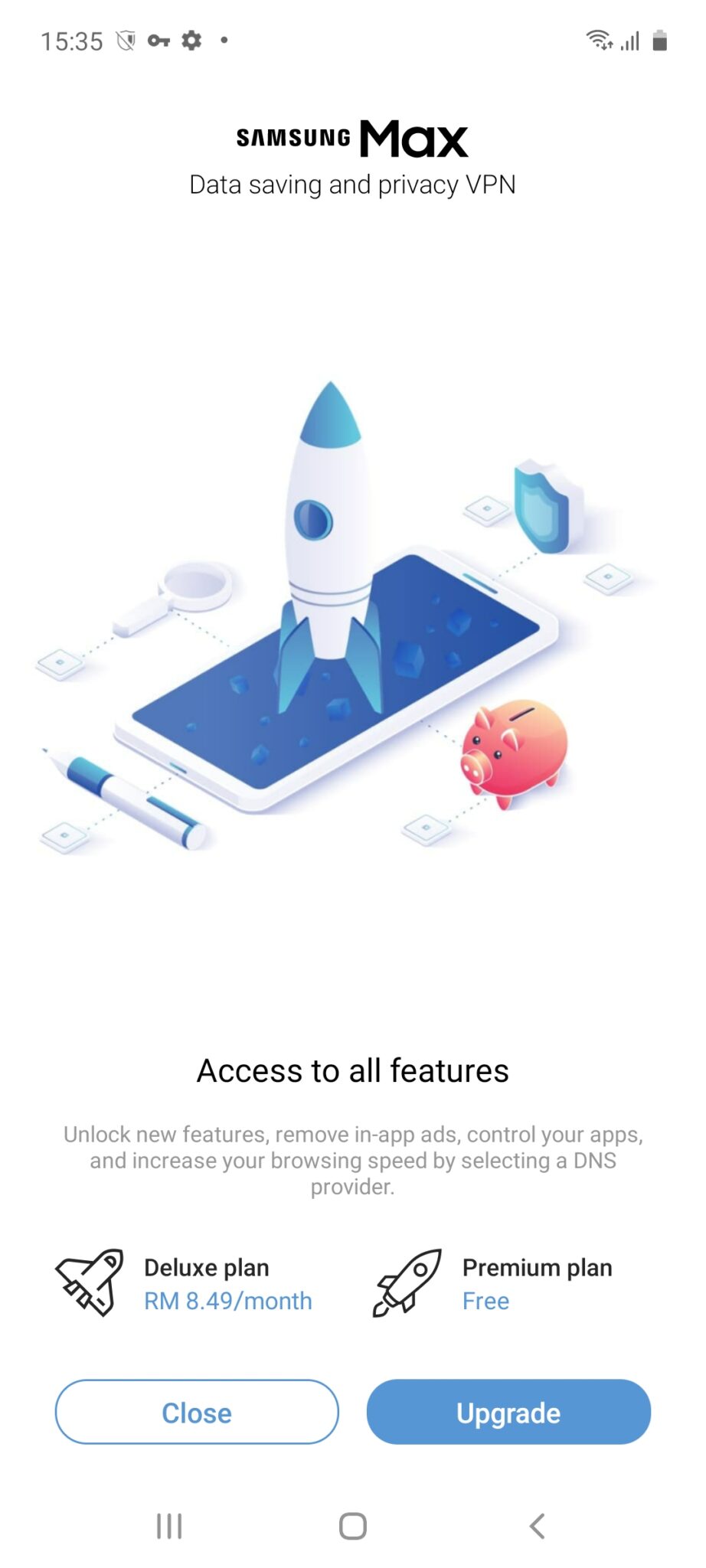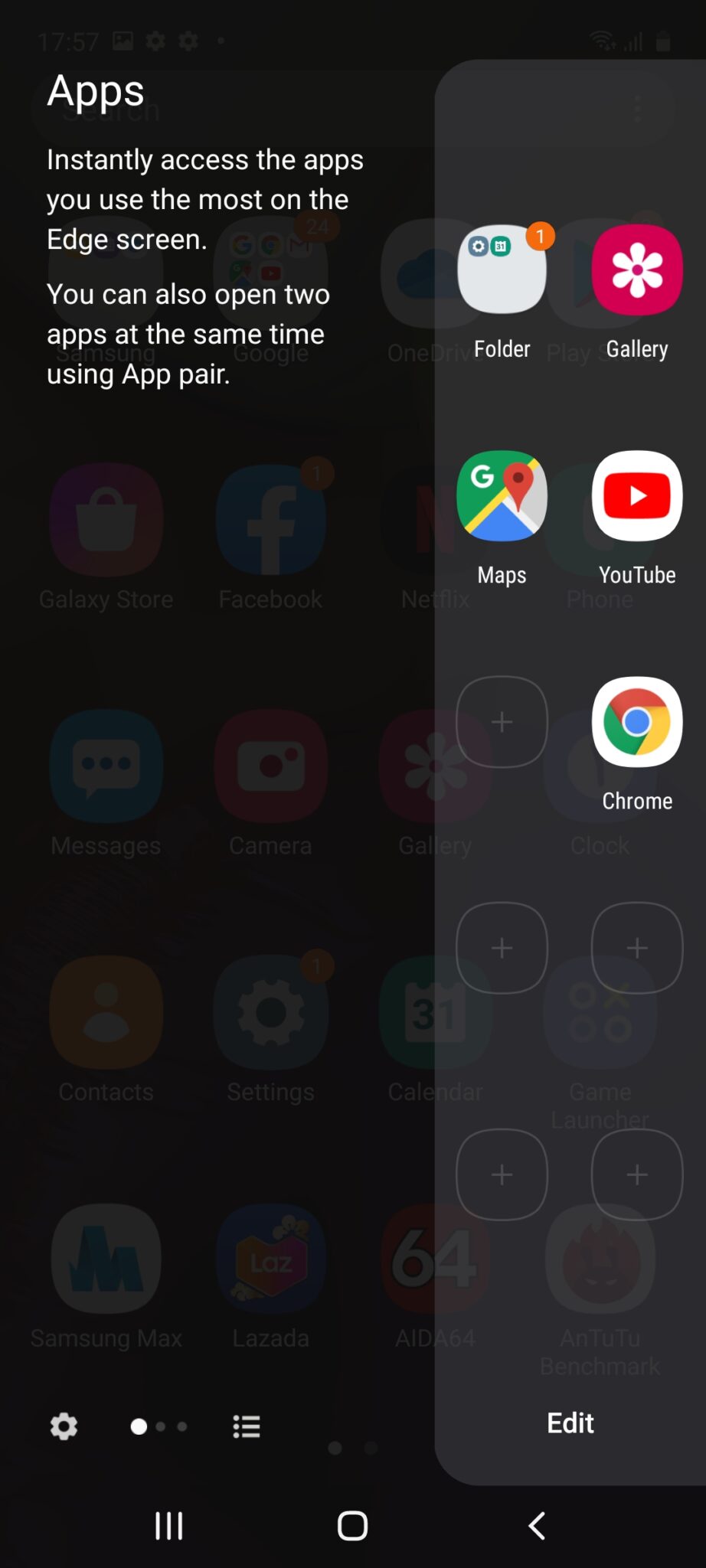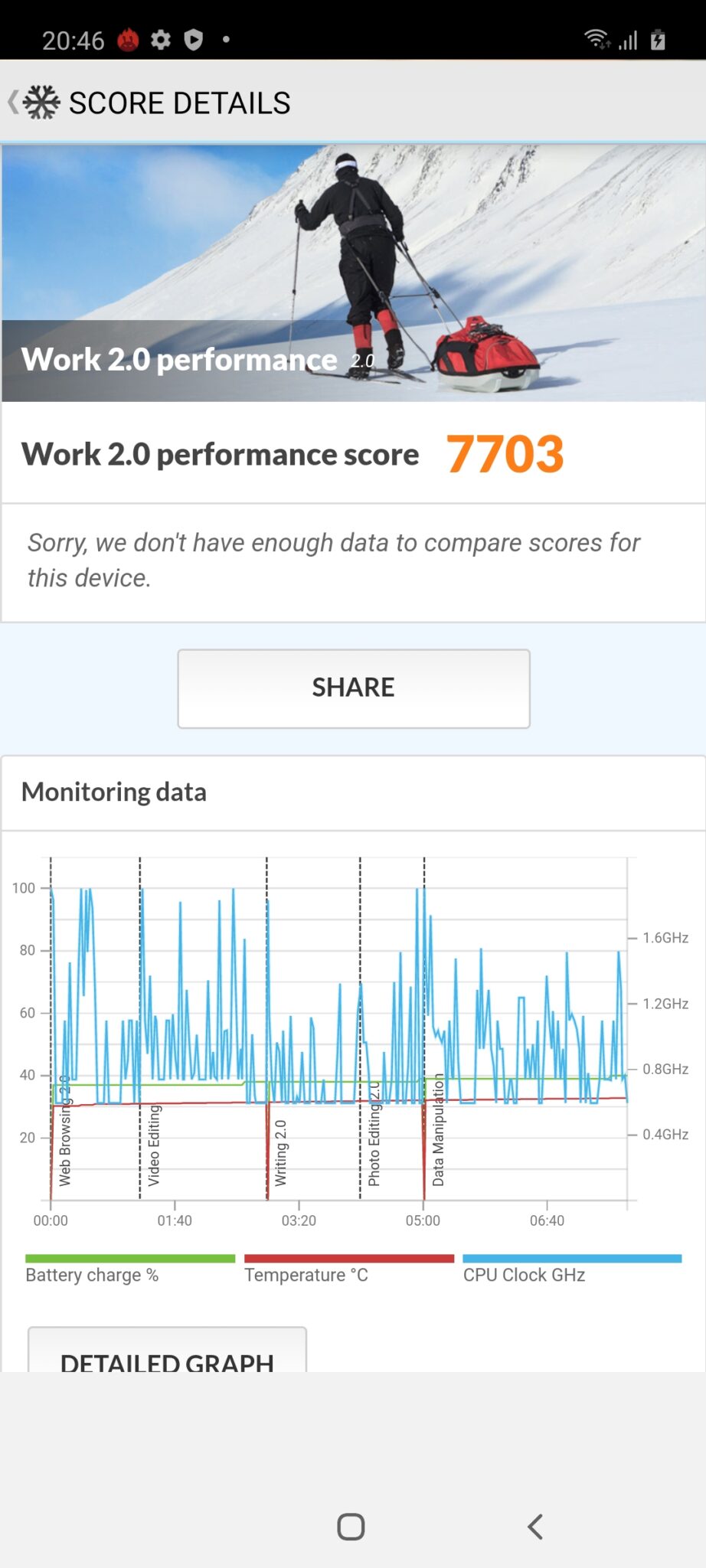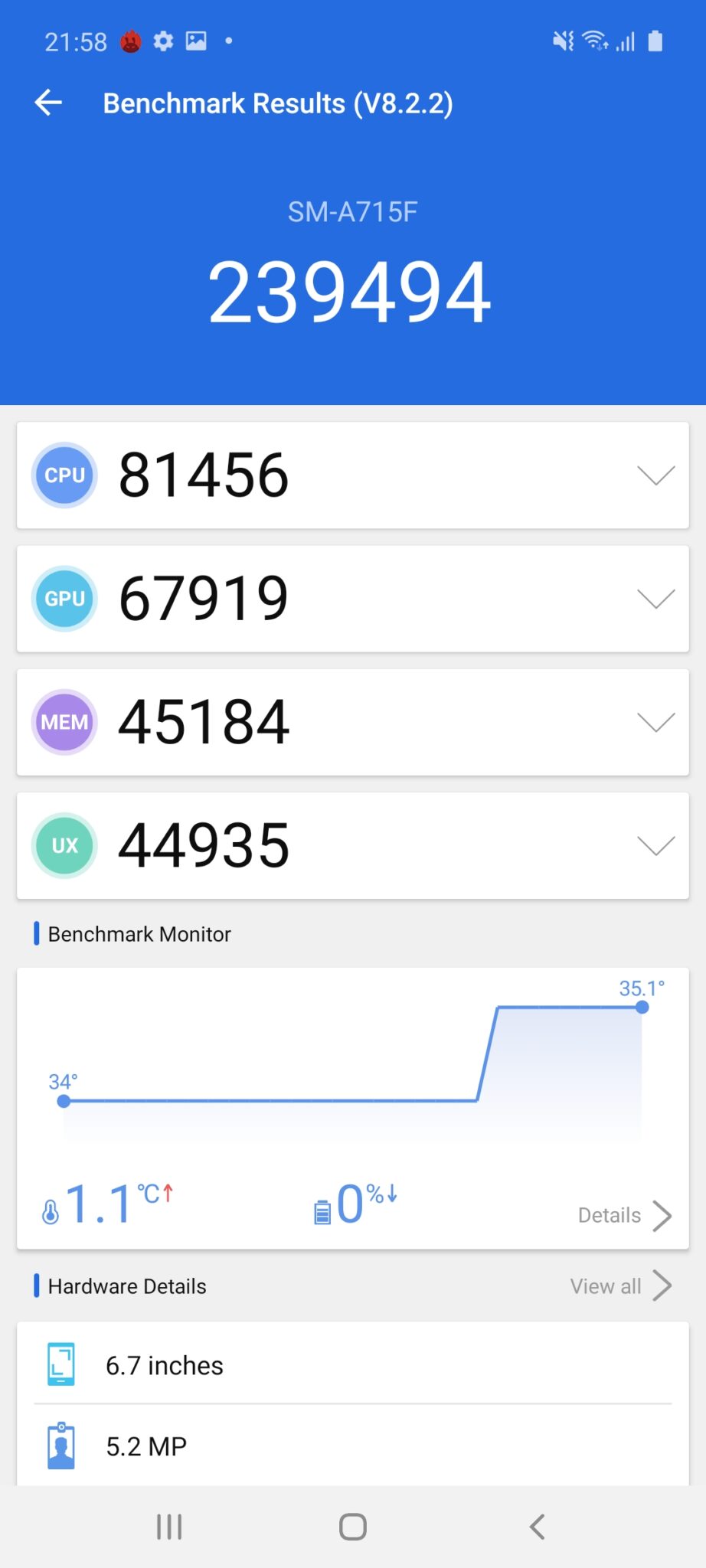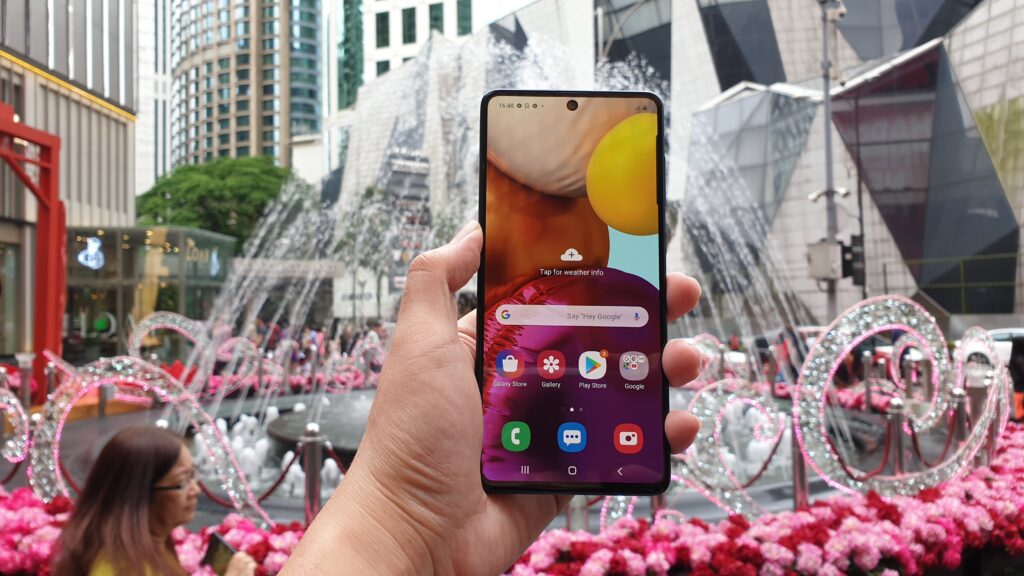
Samsung Galaxy A71 Review – Awesome Screen, Camera and More
The second of Samsung’s two new Galaxy A series phones, the Samsung Galaxy A71 aims to offer to offer the desirable trinity of features for aspiring phone owners – a large and vibrant screen, a good camera and, as they are wont to put it, awesome battery life.
While Samsung’s product naming system is somewhat straightforward, the Galaxy A71 occupies an interesting gray area. While its nomenclature implies it to be a revised upgrade of last year’s Galaxy A70, it has hardware that is closer to the Galaxy A flagship, the Galaxy A80 albeit in a sturdier casing without any of the rotating camera mechanisms of the latter.
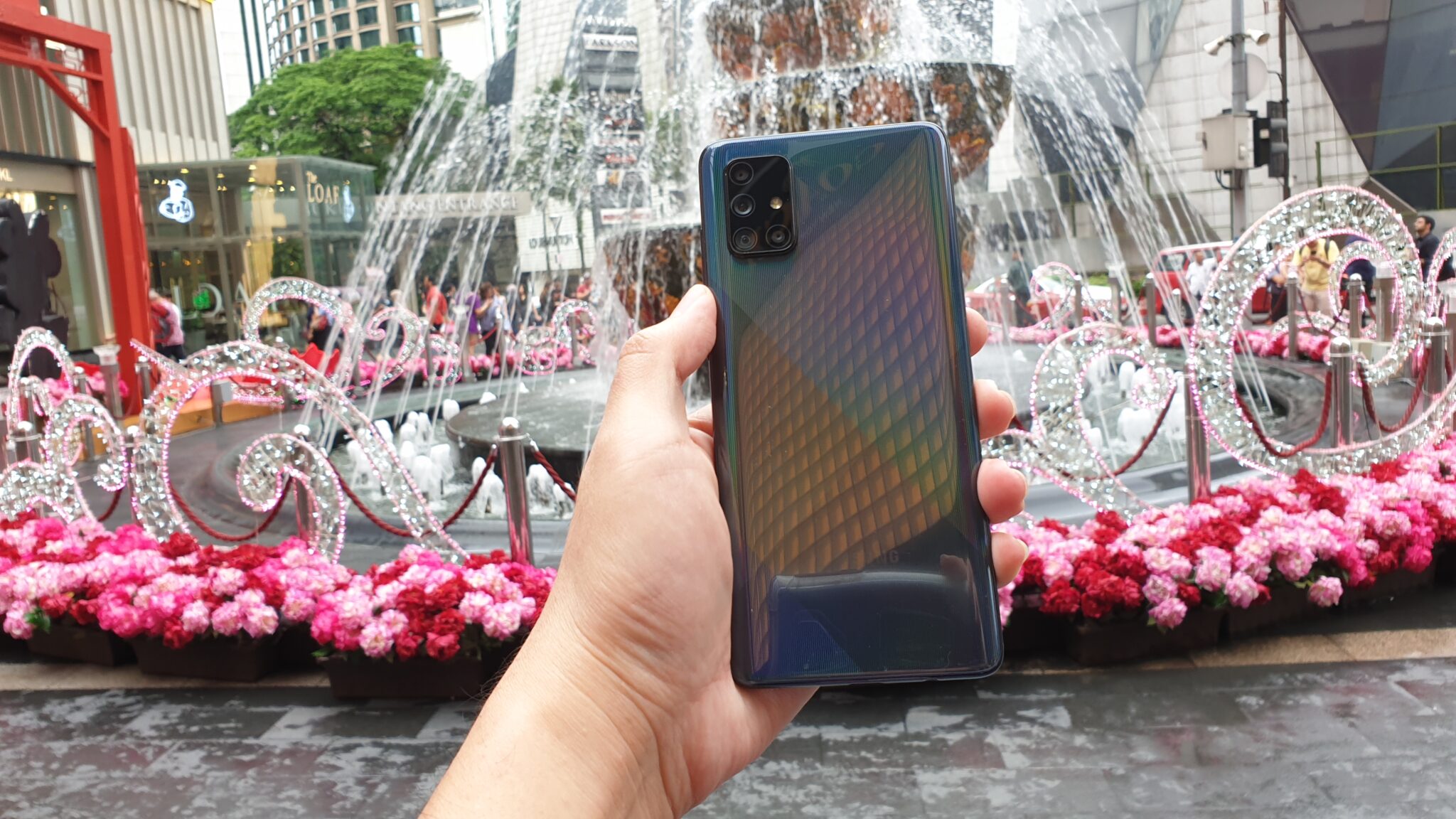
Previously, we took a look at its design and build quality. This time around, we’re going to put it through our usual bench marks and field tests.
Samsung Galaxy A71 performance and Specifications
Table of Contents
As a midrange phone, the Galaxy A71 is quite well equipped with a 6.7-inch FHD+ Super AMOLED Plus Infinity-O display. What this translates to, minus the marketing jargon, is a large and vibrant Super AMOLED display with 2,280 x 1080 pixels resolution with a small punch hole up top for the 32-MP camera.
Complementing this is a midrange Snapdragon 730 octacore processor paired with 8GB RAM and 128GB of storage with a triple card slot that accepts microSD cards up to 512GB in size. The Snapdragon 730 octacore processor was first introduced in 2019 and is used in Xiaomi’s Mi 9T as well as Samsung’s own Galaxy A80; both were introduced last year as well.
While it’s not an apple to apple comparison, so to speak, the Galaxy A71’s RAM and storage setup is akin to the A80 with an identical processor running the show though the Galaxy A71 has a more powerful camera and a larger battery at a lower price point. All these points are compelling features especially for someone on a budget.
The phone runs One UI 2.0 on Android 10 with a few refinements specific to Samsung’s Galaxy A series. Older versions had some amount of bloatware but this time around they’ve achieved a somewhat fair middle ground. Rather than plonking in two browsers, Samsung has just stuck with Chrome and left their proprietary browser as an optional download.
Other apps preloaded on the phone include Netflix and Lazada both of which are fortunately in common use. They’ve also added in the Samsung Max app that acts as a combination of a VPN and a data savings app though the latest version now has a freemium ad-supported mode and a deluxe version with an RM8.49 monthly subscription fee.
Other features culled from higher end Samsung phones include their Edge screen which lets you get a series of shortcuts to favourite apps and a Bixby Home page that aggregates all your notifications into one page. Getting about is fast, smooth and generally intuitive with a relatively flat learning curve.
In terms of synthetic benchmarks, the Galaxy A71 has approximately similar performance to the A80. In Antutu 3D it got a score of 239,494 points while in 3D Mark’s Sling SHot Extreme Open GL ES 3.1 test it got 2,035 points and 1,862 points in the Sling Shot Extreme – Vulkan test. In PCMark’s Work 2.0 test, it got 7,703 points. In GeekBench 5, the Galaxy A71 got a single-core score of 547 points and 1,743 points in the multi-core score test.
When taken for a whirl around the block, the Galaxy A71 did everything expected of it without faltering or keeling over. The web browsing experience on Chrome ran smoothly with over a dozen windows open and resource heavy pages loading without a hitch while swapping between all of them took mere seconds.
Most apps loaded in seconds save for more intensive, resource intensive ones with a cloud-component like Call of Duty Mobile with the general user experience being fast and zippy across the board. On that front, it’s a pretty competent gaming platform as well with the aforementioned game running smoothly at high settings along with Asphalt 8, PUBG and Planescape:Torment.
The display on the Galaxy A71 offers vibrant, saturated hues and pin-sharp text onscreen with the ability to play Netflix in Full HD. Clarity under sunlight is good for gaming and movie watching duties though the mono speaker at the base detracts from a full-on viewing or gaming experience.
While the mono speaker fairly loud and doesn’t distort at maximum volumes, there’s only so much it can do but at this price point it’s hard to quibble though a stereo speaker setup would have been most welcome.
Galaxy A71 quad camera
While comparisons would be drawn to its immediate predecessor the Galaxy A70, the Galaxy A71 comes with a much beefier camera array, upping the camera count to 4 versus its predecessors triple camera array. For the Galaxy A71, you get a massive 64-MP F/1.8 camera as the primary camera paired with a larger 12-MP 123-degree angle ultrawide camera, a 5-MP depth sensor and a 5-MP macro camera.

One thing to note is that none of the cameras have optical image stabilisation (OIS) though there is a software-based Super Steady mode to offer a modicum of image stabilisation when capturing video. The front has a 32-MP fixed focus selfie camera. Both the front and rear cameras are capable of capturing 4K video.
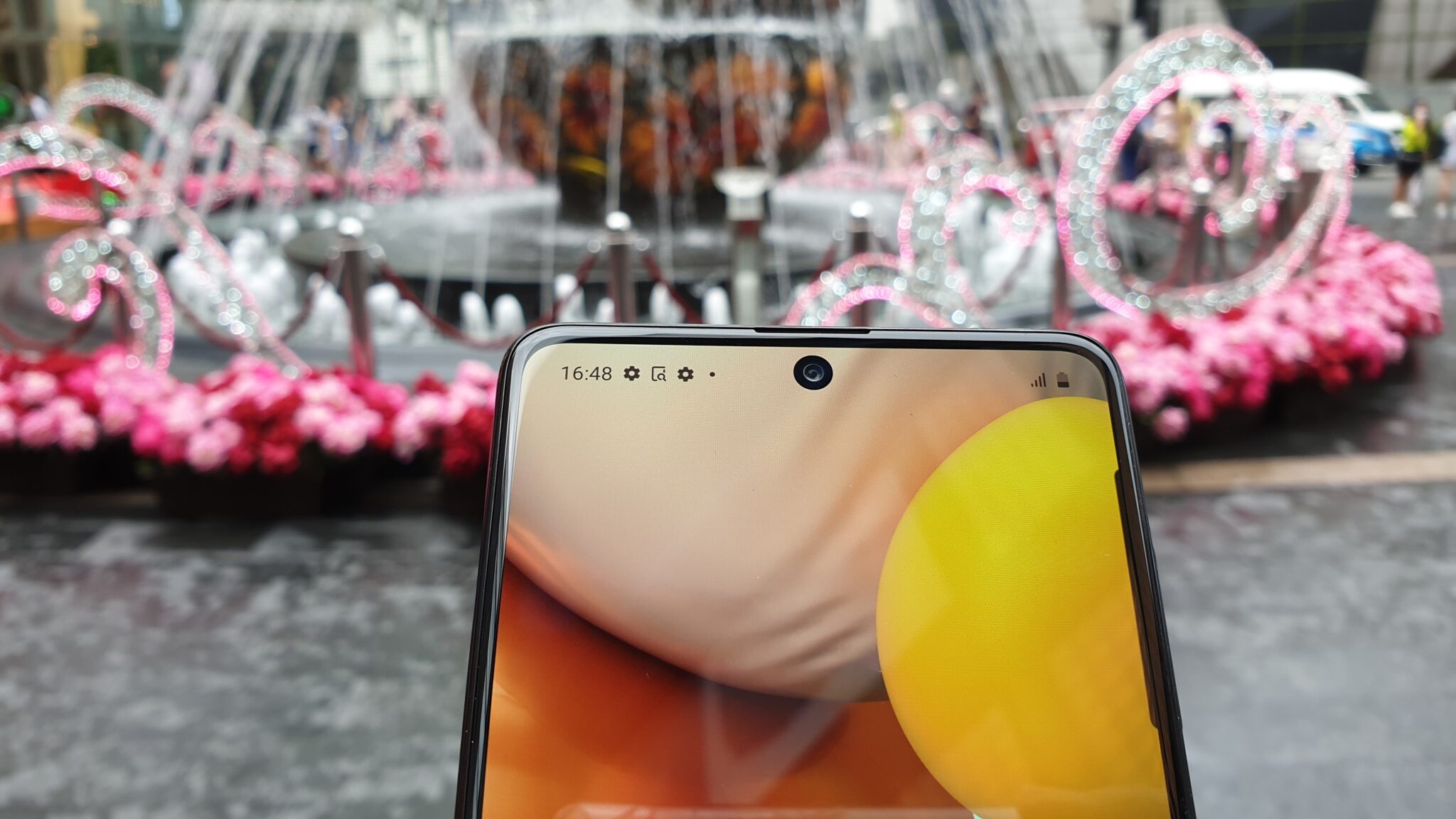
Compared to the A70, the Galaxy A71 has double the Megapixel count on the primary camera and a better wide angle camera to boot as well as benefiting from a number of algorithm enhancements to offer better overall performance and more features with the addition of a Night mode in particular to offer better shots in low light. 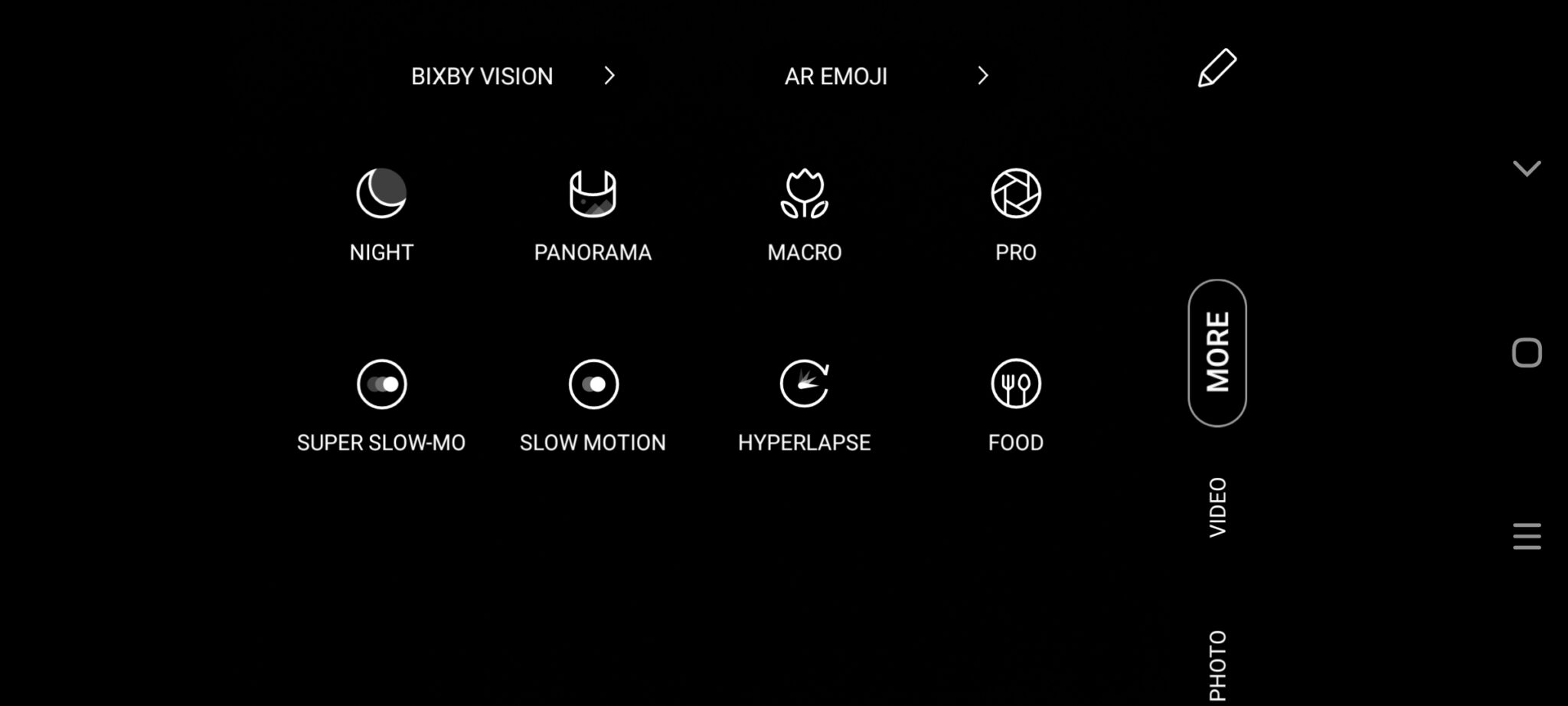
The camera UI is somewhat akin to the usual interface and menu options seen on the Galaxy S series and Note series albeit pared down to avoid competition. You still get the usual auto, video, panoramic and macro modes as well as a Live Focus mode though it’s the basic one circa Galaxy Note 9.

Primary camera of the Galaxy A71 on auto mode indoors

Wide angle camera of the Galaxy A71 taken indoors
You’re only able to dial the strength of the defocus but not the aesthetic style seen in the Galaxy S10 onwards. The camera UI also lacks a Live Focus Video mode as well so the depth camera is mostly relegated for stills.
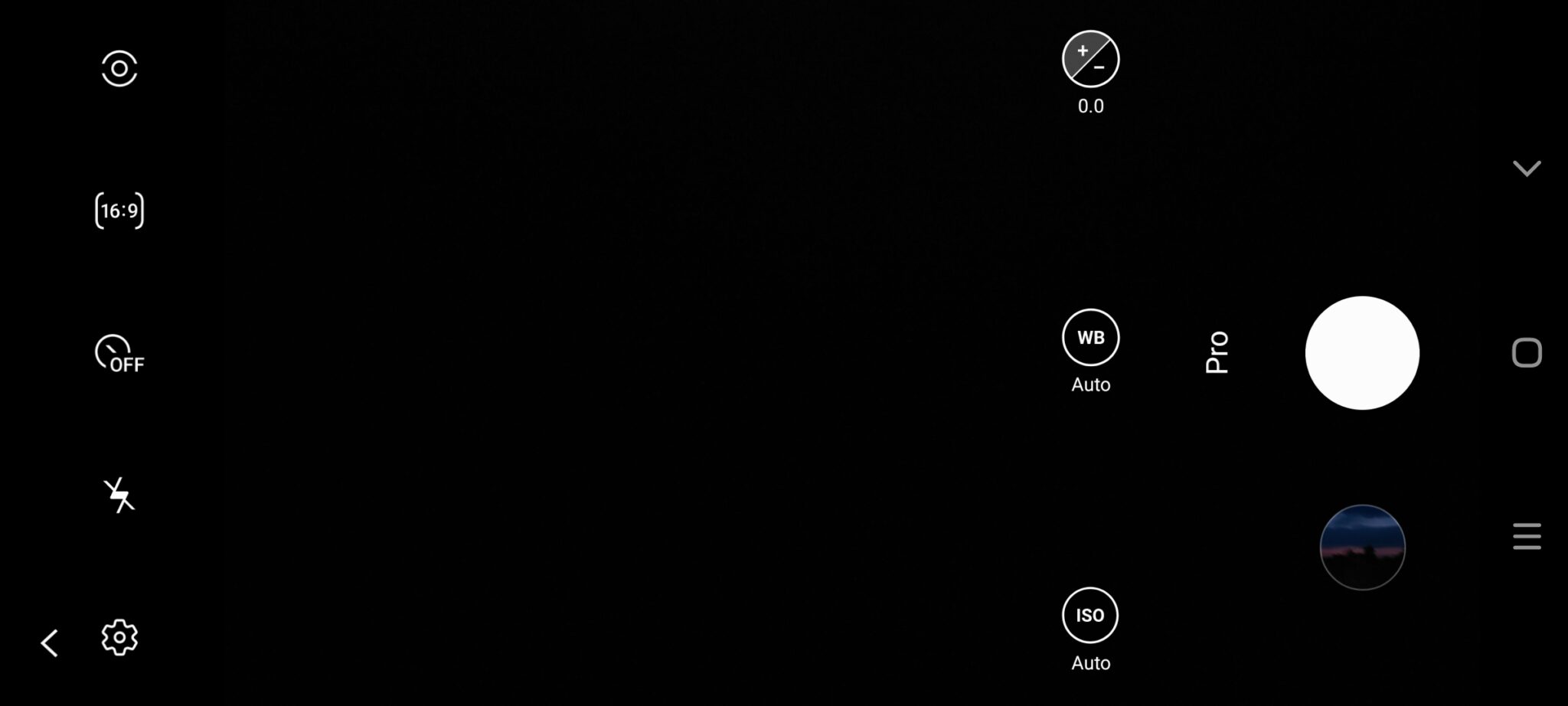
Fortunately, what you do get is a Scene Optimiser mode that detects what you’re shooting and tweaks settings for best results.
In keeping with other Galaxy A series phones, the Galaxy A71 also has a Pro mode but it’s still as basic as it gets with only the option to tweak ISO, exposure and white balance. Still, seeing its intended demographic, it’s not a major concern.

Capture with the Galaxy A71 main camera on auto settings
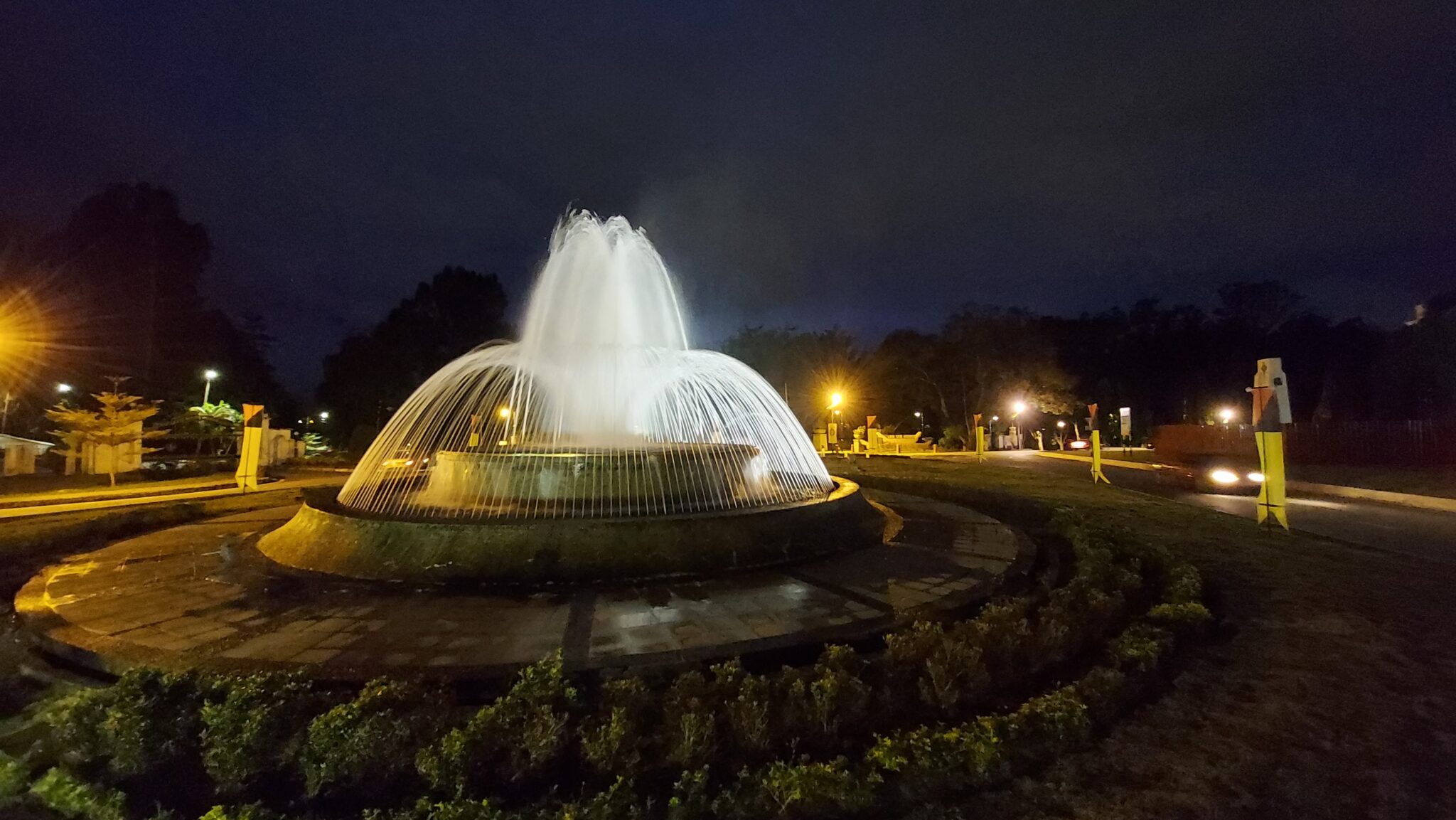
Wide angle camera on the Galaxy A71
In the field the Galaxy A71 proved to be very competent with results matching most contenders in its price range with good shots from its primary and wide angle camera in both daylight and dim light conditions.
The 64-MP primary camera proved to be highly capable with good detail and colour rendition on auto mode in both daylight and all but the dimmest low light conditions.
For night shots, Samsung has provided a Night mode this time around that works for both the primary and wide angle camera that has a longer exposure time but offers better lit shots that offer richer colours though with a trade-off of a slightly soft look.

Taken with macro mode indoors

Macro mode outdoors.
The wide angle camera did best under daylight with slightly poorer performance under low light. Both the primary and wide angle camera are immediately accessible on the camera UI but the provided macro camera is nested deeper in the menus. Macro shots are fair but seem rather washed out when used outdoors and it produces grainy shots in dim light; understandable seeing the nature of the small 5-MP camera. It performs its best work under bright, indirect light.
The provided Live Focus mode is the basic version unlike the more sophisticated ones seen in the Galaxy S10 series onwards but does let you dial the depth of bokeh. There’s some subtle improvements in the algorithm and it’s able to better track subtler details like hair over the older A70. Videos captured in 4K don’t benefit from any electronic image stabilisation so you’ll need to use it with a tripod for best results. Videos are decent for casual use but dynamic range and detail aren’t particularly stellar compared to what a flagship Galaxy S or Note series phone can deliver.

Live Focus mode on the Galaxy A71. Pretty good as it manages to pick out and identify the edges even with the fine hairs on the resident cat.
Dial the video down to 1080P resolution and you get a modicum of image stabilisation via Samsung’s Super Steady mode first seen on last year’s models with relatively smooth results if you keep videos to a smooth gait though the Super Steady OIS in the new Galaxy S10 Lite is a far superior implementation that also incorporates hardware stabilisation versus just software alone.
In its own mid-tier league, the Galaxy A71’s cameras compare favourably with its contemporaries with the added advantage of 4K video capture and a Super Steady mode allowing for decent quality stills and video for both casual use and social media posts.

Captured with the primary camera of the Galaxy A71

Ultra wide angle mode for the Galaxy A71
Galaxy A71 Price, Battery Life and Conclusion
In terms of endurance the Galaxy A71 has one of the largest batteries available in the market at 4,500mAh which also has 25W fast charging.
With an average use case using a combination of data and WiFi on all day, moderate use of Facebook, TikTok, Instagram as well as a couple of hours of gaming and YouTube surfing, the phone was easily able to last a whole day and a half before things dipped low enough to be a concern.
We lacked the bundled fast charger in our review unit but we managed to use a third party 25W fast charger and managed to get it juiced in just under two hours.
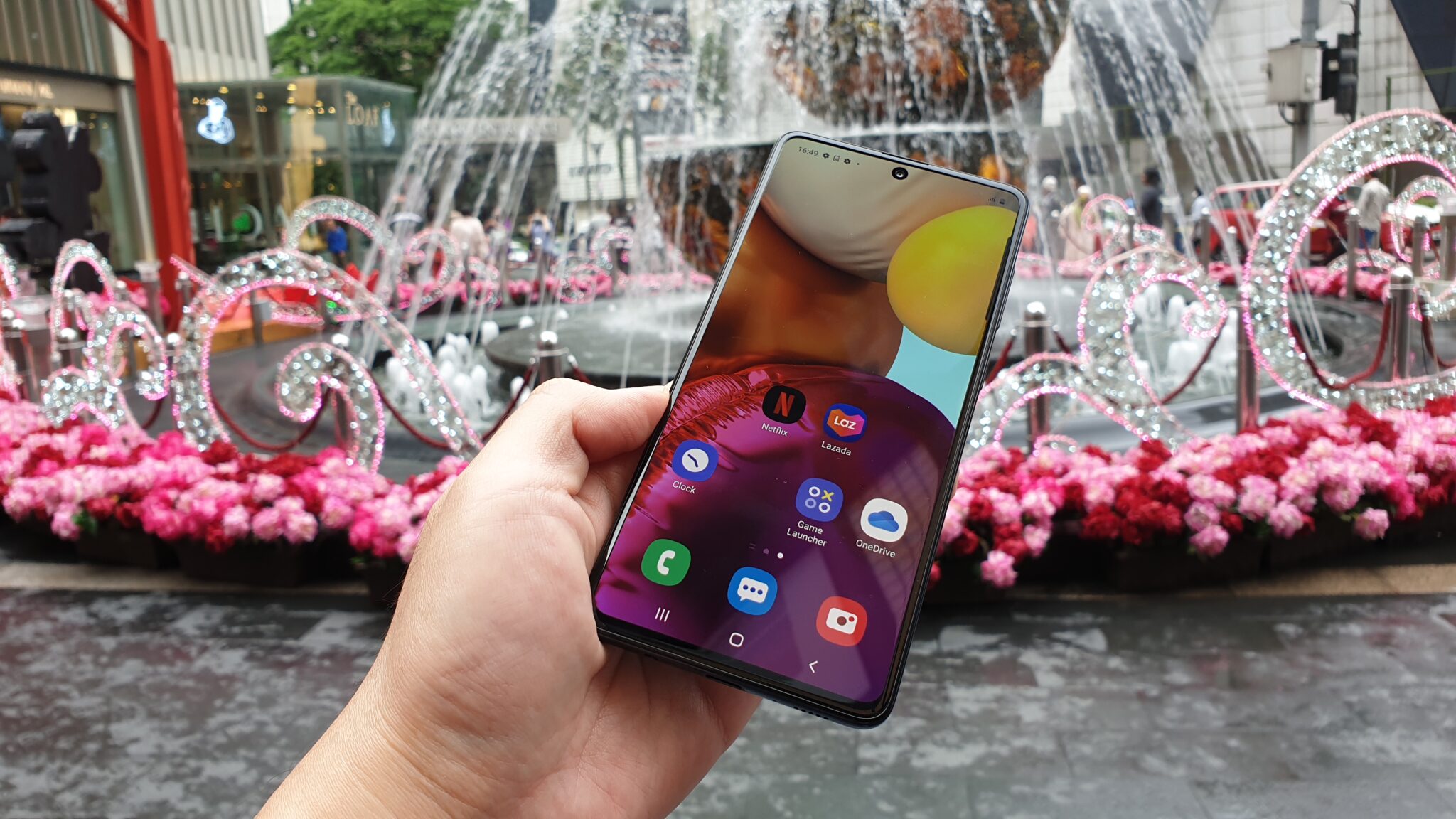
At RM1,799, the Samsung Galaxy A71 is priced just slightly north of average midrange phone prices in Malaysia but it proves to be a competitive for astute shoppers as the phone brings a lot to the table.
You get a larger Super AMOLED display compared to the competition that often use less vibrant LCD panels, a solid set of specifications, a decent rear quad camera, a massive battery along with a triple card slot and a 3.5mm audio jack too. For aspiring buyers on a budget looking to acquire a sub RM1,800 phablet workhorse, the Galaxy A71 is well worth a look.
What we liked Large and vibrant Super AMOLED display, good rear camera for price, long battery life, 3.5mm audio jack, under-display fingerprint reader, triple card slot
What we didn’t finish is a fingerprint magnet, plasticky buttons, pared down Pro mode, no water resistance
We say The Samsung Galaxy A71 compares favourably against other midrange phones and brings a lot to the table, offering a massive and vibrant Super AMOLED display, a good rear quad camera, expandable memory, an audio jack and above all, superb battery life, all at a price under RM1,800.
Samsung Galaxy A71 Specifications
Price RM1,799
Display 6.7-inch Super AMOLED Plus Infinity-O display, 2,400 x 1080 pixels
Processor Qualcomm Snapdragon 730 2.2GHz octacore
Memory 8GB RAM/ 128GB + triple card slot (microSD up to 256GB)
Camera 64-MP /F1.8 + 12-MP ultrawide angle + 5-MP depth sensor + 5-MP macro camera (rear) / 32-MP (front)
Battery 4,500mAh w/ 25W fast charging
Size/Weight 163.6 x 76 x 77mm/ 179g
Review unit courtesy of Samsung Malaysia. Check out their official product page here.

